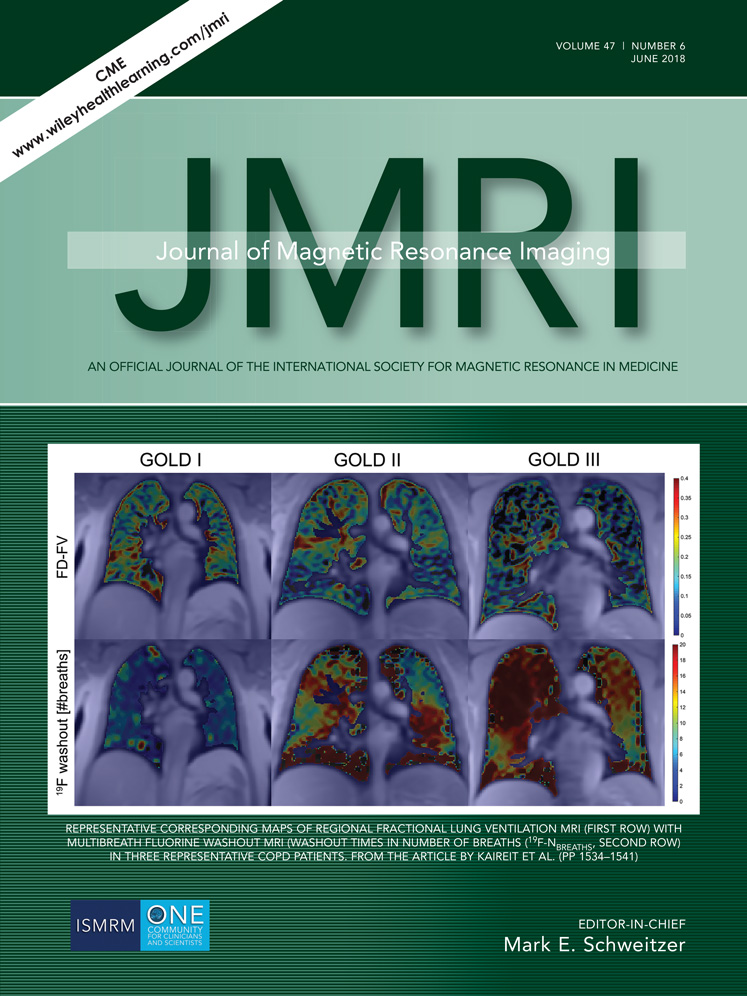Probabilistic tractography-based thalamic parcellation in healthy newborns and newborns with congenital heart disease
Abstract
Background
Given the central role of the thalamus in motor, sensory, and cognitive development, methods to study emerging thalamocortical connectivity in early infancy are of great interest.
Purpose
To determine the feasibility of performing probabilistic tractography-based thalamic parcellation (PTbTP) in typically developing (TD) neonates and to compare the results with a pilot sample of neonates with congenital heart disease (CHD).
Study type
Institutional Review Board (IRB)-approved cross-sectional study.
Model
We prospectively recruited 20 TD neonates and five CHD neonates (imaged preoperatively).
Field Strength/Sequence
MRI was performed at 3.0T including diffusion-weighted imaging (DWI) and 3D magnetization prepared rapid gradient-echo (MPRAGE).
Assessment
A radiologist and trained research assistants segmented the thalamus and seven cortical targets for each hemisphere. Using the thalami as seeds and the cortical labels as targets, FSL library tools were used to generate probabilistic tracts. A Hierarchical Dirichlet Process algorithm was then used for clustering analysis. A radiologist qualitatively assessed the results of clustering. Quantitative analyses were also performed.
Statistical Tests
We summarized the demographic data and results of clustering with descriptive statistics. Linear regressions covarying for gestational age were used to compare groups.
Results
In 17 of 20 TD neonates, we identified five connectivity-determined clusters, which correlate with known thalamic nuclei and subnuclei. In four neonates with CHD we observed a spectrum of abnormalities including fewer and disorganized clusters or small supernumerary clusters (up to seven per thalamus). After covarying for differences in corrected gestational age (cGA), the fractional anisotropy (FA), volume, and normalized thalamic volume were significantly lower in CHD neonates (P < 0.01).
Data Conclusions
Using PTbTP clusters, correlating well with the location and connectivity of known thalamic nuclei, were identified in TD neonates. Differences in thalamic clustering outputs were identified in four neonates with CHD, raising concern for disordered thalamic connectivity. PTbTP is feasible in TD and CHD neonates. Preliminary findings suggest the prenatal origins of altered connectivity in CHD.
Level of Evidence: 2
Technical Efficacy: Stage 4
J. Magn. Reson. Imaging 2018;47:1626–1637.




